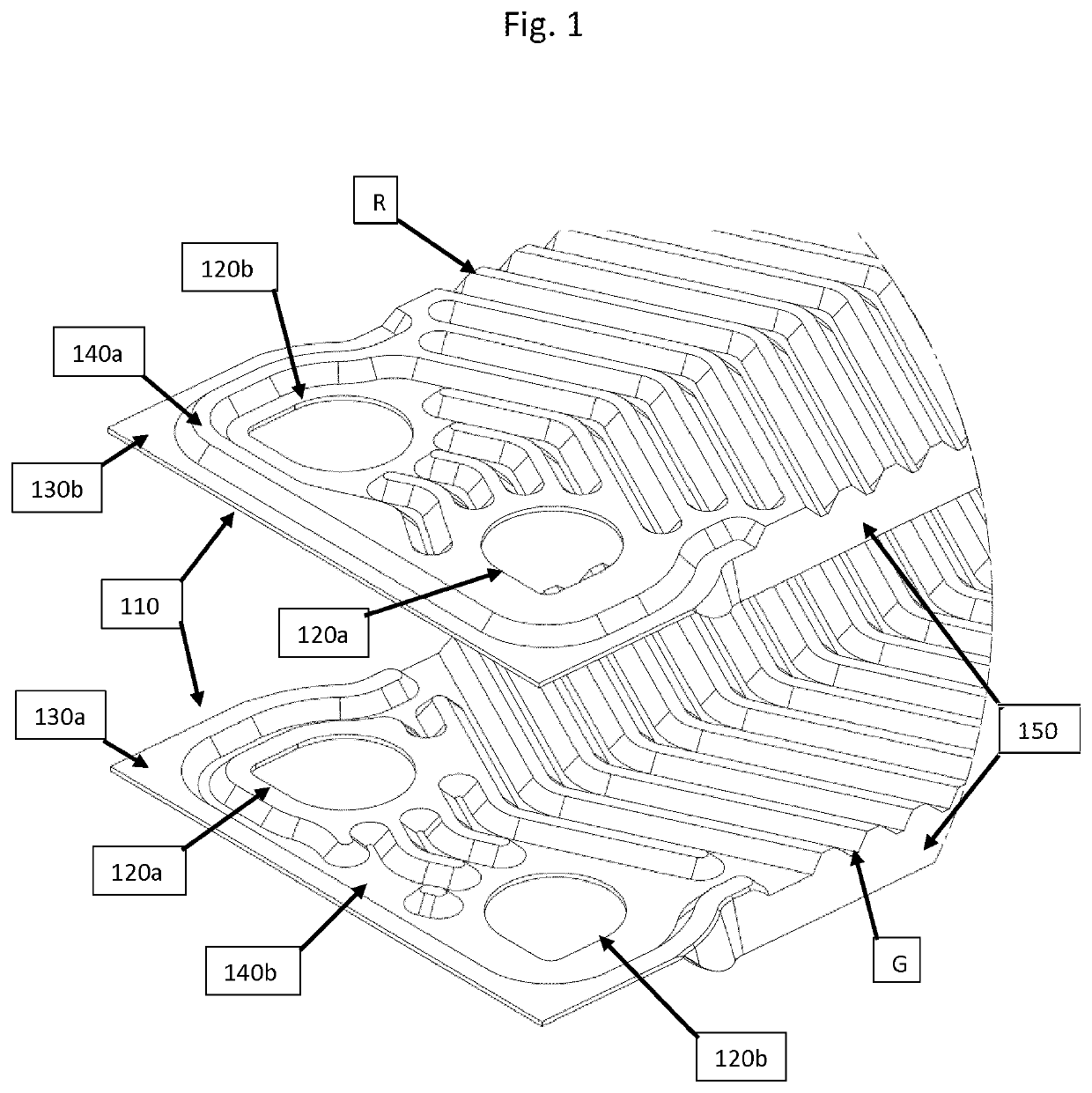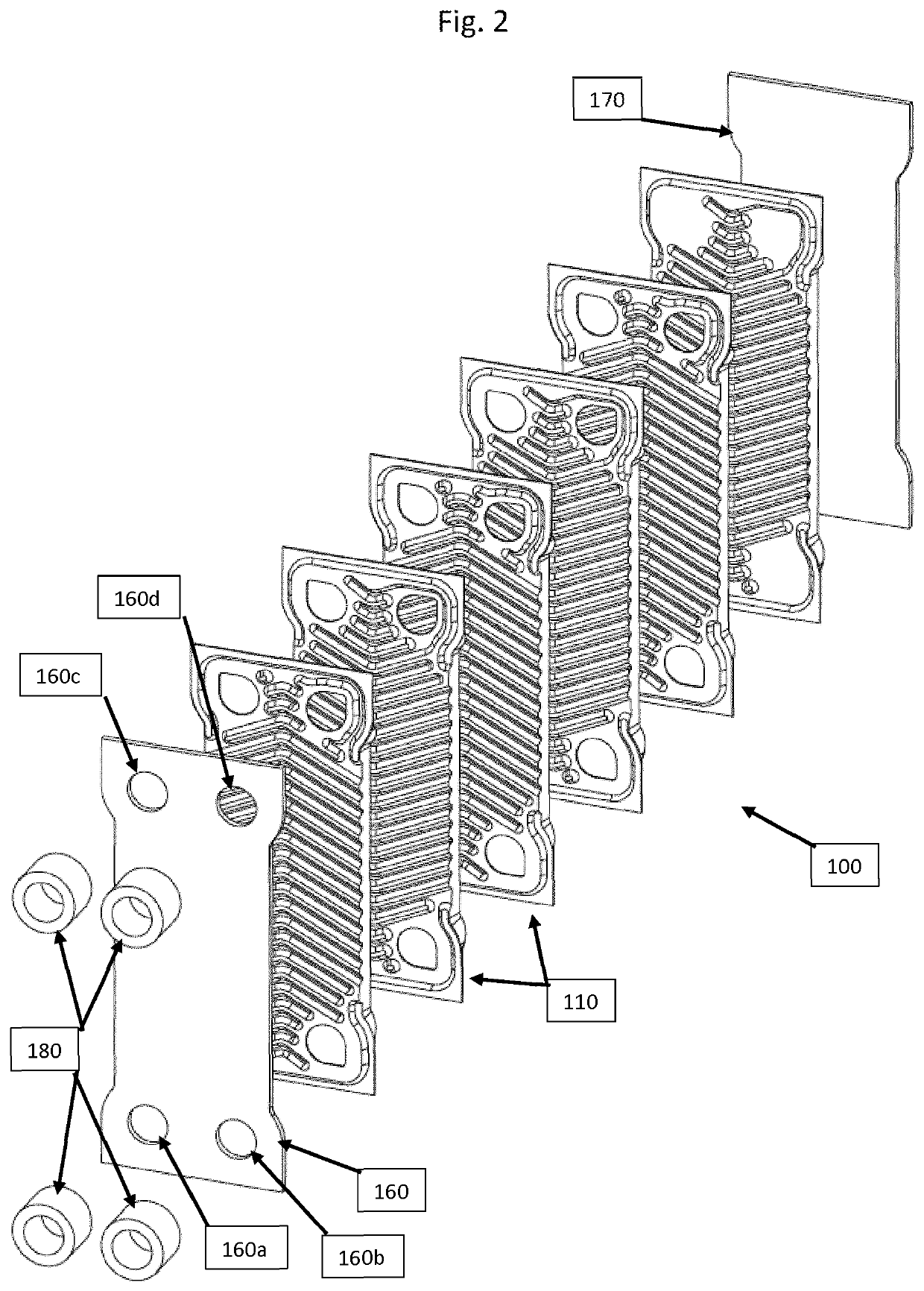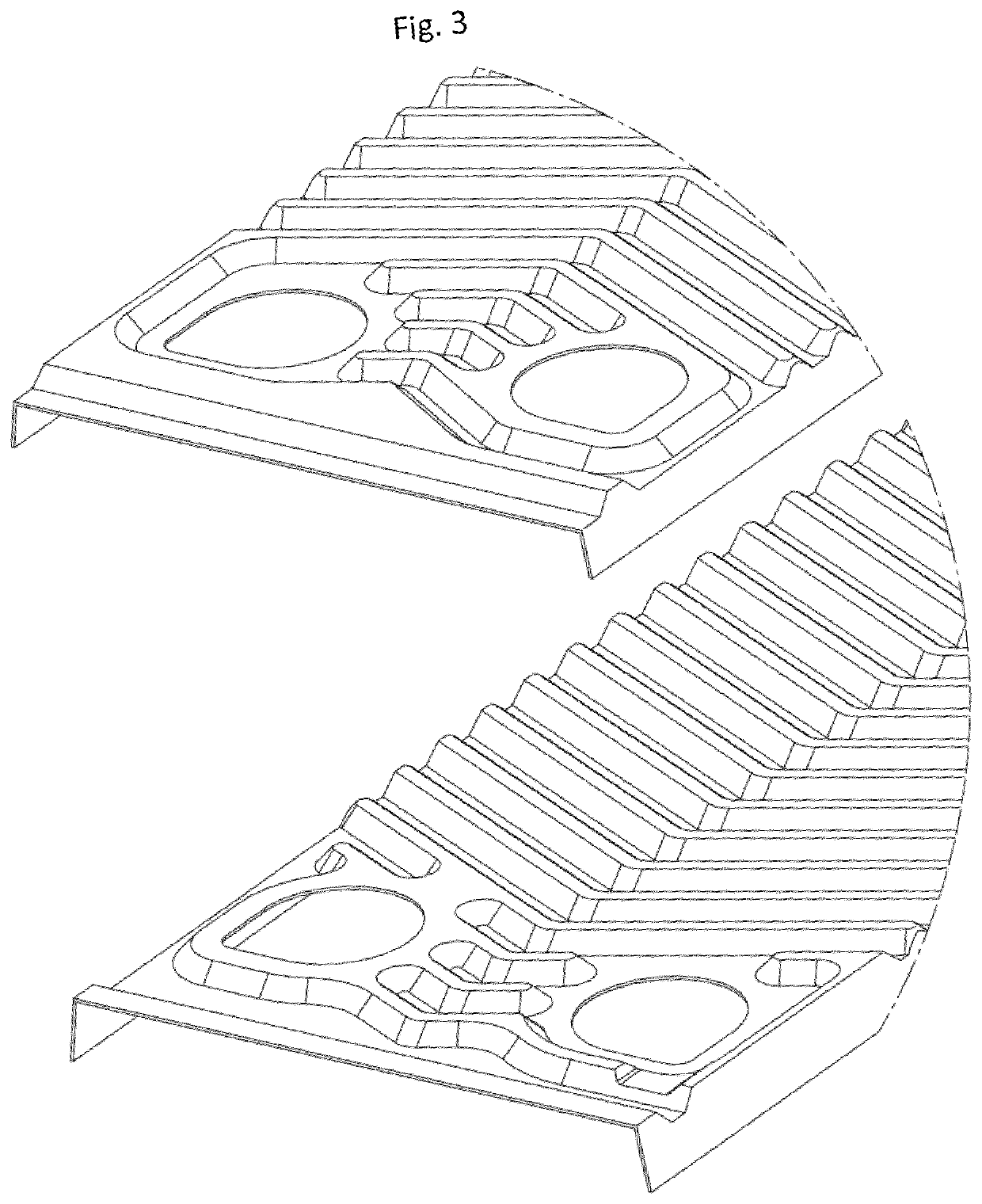Heat exchanger
a heat exchanger and brazed plate technology, applied in the direction of heat exchange apparatus, heat exchanger fastening, stationary plate conduit assembly, etc., can solve the problems of large force required to press the plate, and high cost of presses, etc., and achieve the effect of high “nip force”
- Summary
- Abstract
- Description
- Claims
- Application Information
AI Technical Summary
Benefits of technology
Problems solved by technology
Method used
Image
Examples
Embodiment Construction
[0033]In FIG. 1, short ends of two heat exchanger plates 110 are shown. The heat exchanger plates 110 may be made from e.g. austenitic stainless steel in a thickness of 0.1 to 2 mm, but may also be made from other materials in other thicknesses. The short ends each comprise two port openings 120a and 120b, wherein the port openings 120a are provided on a high level and the port openings 120b are provided on a low level. The short ends of each heat exchanger plate 110 are not similar. Rather, sealing surfaces 130a, 130b, and 140a, 140b, respectively, and areas surrounding the port openings 120a, 120b are mirror images of one another. The sealing surface 130b, the sealing surface 140b and the area surrounding the port openings 120b are located on a low level, whereas the sealing surface 130a, the sealing surface 140a and the areas surrounding port openings 120a are located on a high level.
[0034]When the heat exchanger plates 110 are stacked in a stack to form a heat exchanger, every o...
PUM
| Property | Measurement | Unit |
|---|---|---|
| thickness | aaaaa | aaaaa |
| thicknesses | aaaaa | aaaaa |
| length | aaaaa | aaaaa |
Abstract
Description
Claims
Application Information
 Login to View More
Login to View More - R&D
- Intellectual Property
- Life Sciences
- Materials
- Tech Scout
- Unparalleled Data Quality
- Higher Quality Content
- 60% Fewer Hallucinations
Browse by: Latest US Patents, China's latest patents, Technical Efficacy Thesaurus, Application Domain, Technology Topic, Popular Technical Reports.
© 2025 PatSnap. All rights reserved.Legal|Privacy policy|Modern Slavery Act Transparency Statement|Sitemap|About US| Contact US: help@patsnap.com



